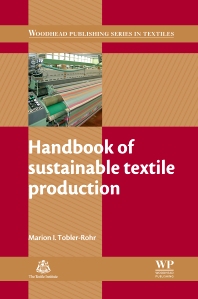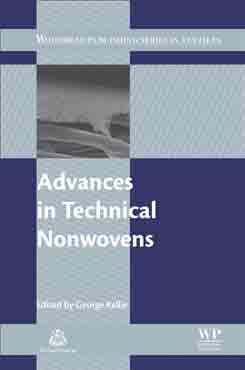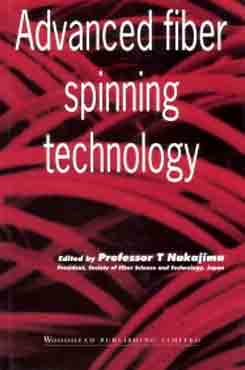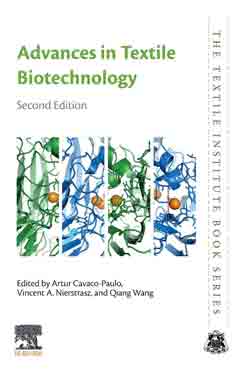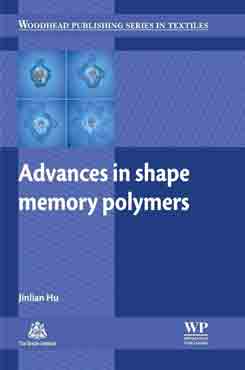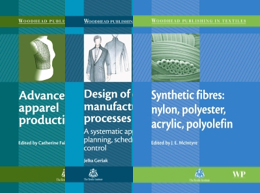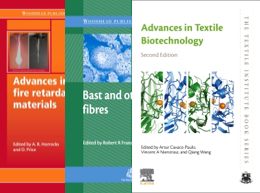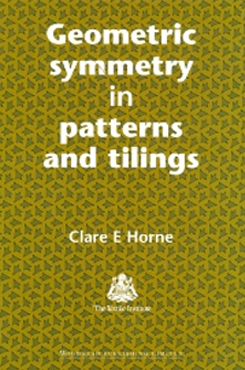Description
Textile products are produced, distributed, sold and used worldwide. A quantitative assessment of sustainability in the textile manufacturing chain is therefore extremely important. The Handbook of sustainable textile production is a compilation of technical, economical, and environmental data from the various processes in this chain. This authoritative reference work provides a detailed study of the sustainable development of textiles.The book opens with an introduction to the topic.
Chapters define the principles of sustainability and its use in legislation and industry before going on to investigate the impact of textiles throughout the supply chain, starting with the raw fibre through to fabric production, consumption and disposal. Textile process technology and methods for specifying quality and functions in textile products in order to reduce textile waste and improve sustainability are also examined. A series of Life Cycle Assessments (LCAs) carried out in the European textile industry are investigated. These studies comprise a range of processes from cotton growing, spinning and weaving to the recycling of textiles.
The book concludes with a discussion on sustainable textiles from a product development and marketing perspective.With an internationally recognised expert author, the Handbook of sustainable textile production is a valuable reference tool for academics and students as well as for companies across the textile supply chain concerned with developing a sustainable environment, from fibre manufactures and designers to regulatory bodies.
Key Features
- A detailed, quantitative assessment of the sustainable development of textiles
- Provides a useful compilation of technical, economical, and environmental data from various processes in the textile manufacturing chain
- Chapters define the principles of sustainability and its use in legislation and industry, textile process technology, the impact of textiles throughout the supply chain, raw fibre through to fabric production, consumption and disposal
Readership
Table of Contents
- Chapter 1: Sustainable development (SD) as a goal in production, marketing and trade
Abstract:
1.1 A holistic concept
1.2 Theory behind sustainable development
1.3 Sustainability in the public sector
1.4 Sustainability in industry
1.5 Environmental management systems
1.6 Environmental labeling
Chapter 2: The supply chain of textiles
Abstract:
2.1 Introduction
2.2 Natural fibers
2.3 Man-made fibers and filament and yarns
2.4 Energy
2.5 Yarn production
2.6 Fabric production
2.7 Chemical treatment
2.8 Manufacturing
2.9 Consumption, use and care
2.10 Disposal, reuse and recycling scenarios
Chapter 3: Product specification function and textile process technology
Abstract:
3.1 Introduction
3.2 Quality and textile specifications
3.3 Specification of raw material and processes
3.4 Functionality and process technology
3.5 Inherent functionality of natural fibers
3.6 Designed functionality of man-made fibers
3.7 Spinning processes: functionality in two dimensions
3.8 Functionality in three dimensions through weaving and knitting processes
3.9 Chemical treatment for customer functionality
3.10 Functionality in product development
3.11 The origin of best available technology (BAT)
3.12 Best practice in cotton growing and ginning
3.13 Optimizing energy supply in textile processing
3.14 Best mill practice
3.15 Best available technology (BAT) in finishing
3.16 Recommendations for consumption and care
Chapter 4: Life cycle assessment (LCA) and ecological key figures (EKF)
Abstract:
4.1 Introduction
4.2 Life cycle assessment (LCA) methodology
4.3 Eight case studies: scale and scope
4.4 Life cycle inventory (LCI)
4.5 Life cycle assessment (LCA) results
4.6 Life cycle assessment (LCA) sensitivity analysis
4.7 Costs
4.8 Introduction to ecological key figures (EKF)
4.9 Theory for ecological key figures (EKF)
4.10 Applied ecological key figures (EKF) in spinning and weaving
4.11 Discussion on ecological key figures (EKF) of textile products
Chapter 5: Product development and marketing: management and communication
Abstract:
5.1 Introduction
5.2 The structure of the textile and apparel sector
5.3 The marketing environment of textiles and apparel
5.4 Global trade
5.5 Consumer preferences
5.6 Positioning of companies in the market
5.7 Market segments and brands
5.8 Product development and merchandising
5.9 Distribution and distribution channels
5.10 Sourcing
Index
